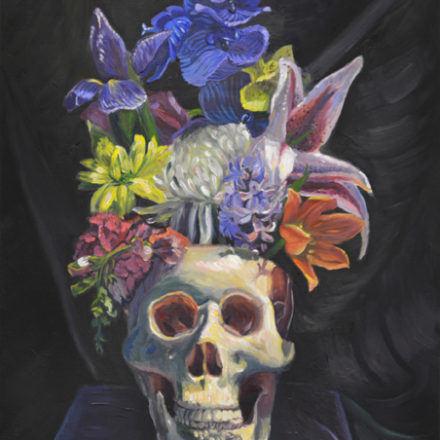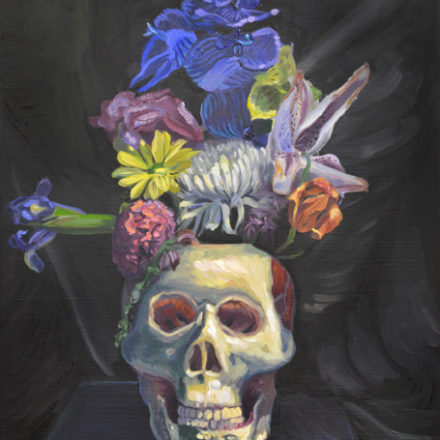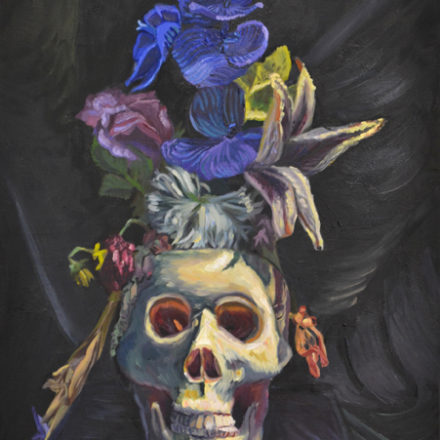Vide y Muerte
I have a fascination with vanitas, which is a type of symbolic work of art especially associated with still life painting in Flanders and the Netherlands in the 16th and 17th centuries, though also common in other places and periods. This Latin term means “vanity” and, loosely translated, corresponds to the insignificance of earthly life as well as the transient nature of all earthly goods and pursuits. Common vanitas symbols include skulls, which serve as a reminder of the certainty of death. I enjoy the idea of the Mexican holiday Día de Muertos (Day of the Dead) to celebrate those who have passed.
I also like the idea of the Mexican holiday Día de Muertos (Day of the Dead) to celebrate those who have passed. On November 1st and 2nd we celebrate our dead by visiting cemeteries and placing altars in the crypts and in our houses, allowing our dead to leave the afterlife and wander for a few days in the world, visiting their family, homes and friends. Annual celebrations destined to the dead, represent an encounter not only of men with their ancestors but also of the members of the community, contributing to large interactions among groups, families, entire communities and their dead.
For the Maya, the dead have life therefore their spirits have a need for sustenance just like the living. That is why they are given certain food to help them during their journey to the afterlife. To this must be added the Catholic festivity of All Saints and All Souls liturgy, both with a long tradition in Christianity introduced by the Spanish, which has resulted in the syncretic practice of the Hanal Pixán.
The Pagan holiday Samhain dates back to the ancient Celts who lived 2,000 years ago. This Celtic word means “summer’s end.” The Celts believed that summer came to an end on October 31st and the New Year began on November 1st with the start of winter. At sunset on October 31, clans or local villages begin the formal ceremonies of Samhain by lighting a giant bonfire. The people would gather around the fire to burn crops and animals as sacrifices to the Celtic deities. The first was to honor the dead who were allowed to rise from the Otherworld. The Celts believed that souls were set free from the land of the dead during the eve of Samhain. Those that had been trapped in the bodies of animals were released by the Lord of the Dead and sent to their new incarnations. The wearing of these costumes signified the release of these souls into the physical world.
The flowers were chose to represent those important to me. On the left, the 4 major past relationships that have since withered and died. On the right, those important family members and loved ones who have not made the journey this far, Including my mother. In the center, myself as the orchid, which represents love, magnificence, strength, artful delicate beauty. To my left a Rose for my friend Arielle. The rose is love and color purple signifies enchantment. To my right is my friend Genna symbolized by the yellow alstroemeria. As the other “relationships” have fizzled and passed on, the three of us stand together in a permanent bond that will one day to be the victim of time. But our souls will live on.
“The dead to the grave and the alive to a blast.”
Showing all 4 results




